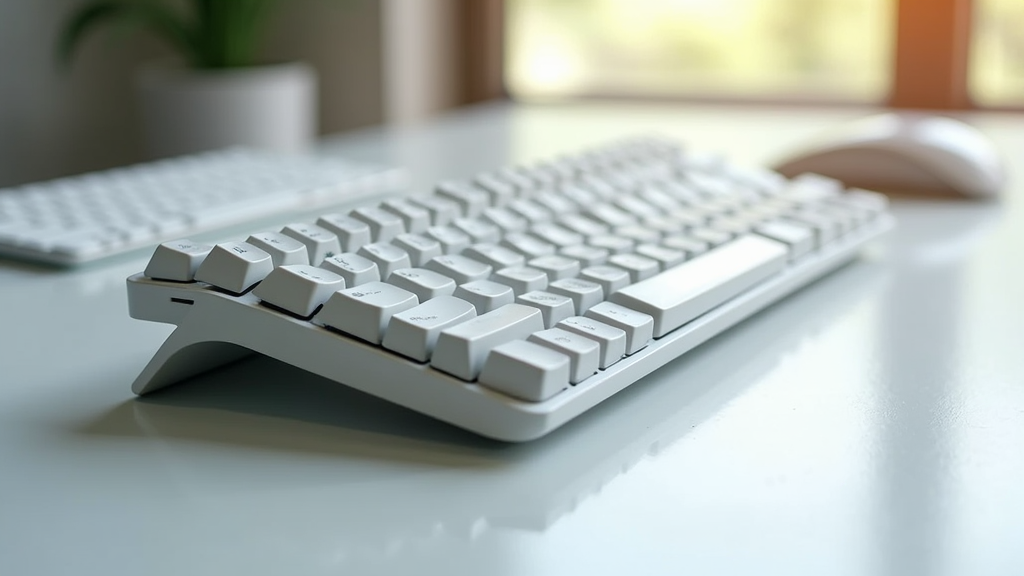
Spending hours typing at a desk can quickly take a toll on your hands, wrists, and shoulders. Ergonomic keyboards help prevent aches and fatigue, supporting your natural posture so you can work comfortably all day. I’ve tried out quite a few, and some options really do make a big difference. Here’s my take on the best ergonomic keyboards for comfort and why they’re worth checking out for your setup.
How Ergonomic Keyboards Improve Comfort
An ergonomic keyboard isn’t just about looking eye-catching on your desk. The main goal is to reduce strain by keeping your hands, wrists, and arms in a more natural position. Traditional flat keyboards tend to flatten your wrists out and make you reach in awkward ways, which can lead to wrist pain or even carpal tunnel syndrome over time.
- Split Layout: By splitting the keys into two sections, your arms and hands stay more in line with your shoulders.
- Tented Design: Some ergonomic keyboards sit at a gentle angle, which helps your wrists relax instead of twisting inwards.
- Cushioned Palm Rests: Extra padding under your palms helps reduce pressure, especially during long sessions.
Switching to an ergonomic design might feel odd at first, but most people notice a comfort boost after just a few days of use. It’s a small change that can make working at your computer a lot more pleasant over time.
Popular Ergonomic Keyboard Styles
I’ve seen several different takes on ergonomic keyboards, but the basic styles usually fall into these categories:
- Split Keyboards: These are two separate halves you can spread apart to match your shoulders. The Kinesis Freestyle Pro is a great example. You can keep them close together or move them wider apart, and some let you add tenting kits.
- Fixed Ergonomic Keyboards: These keep all the keys together but angle the rows and columns so your hands fall naturally in place. The Microsoft Natural Ergonomic Keyboard 4000 has been a popular pick for years.
- Compact Ergonomic Layouts: These shrink things down and usually drop the number pad, letting your mouse stay closer so your shoulder doesn’t have to stretch as far.
You’ll even see some wild-looking keyboards with curved shapes or keys separated by wide gaps; these features are designed to guide your hands into healthier positions and help prevent discomfort during long sessions.
other Ergonomic Keyboards To Consider
After spending a lot of time with all sorts of setups, here are a few picks I think you’ll find especially comfy:
- Kinesis Freestyle2: This one’s super adjustable. You can pull the halves apart, angle each half separately, or add pads under your palms. It works well for both Windows and Mac users.
- Logitech Ergo K860: Offers a gentle split and a rounded, curved keyframe. There’s a smooth palm rest that really takes the pressure off during longer work sessions, making typing much more pleasant.
- Microsoft Sculpt Ergonomic: Compact and clean design with sculpted keys and an included cushioned wrist pad. The separate number pad makes it flexible if you do lots of data entry.
I always suggest checking return policies so you can try a keyboard out for a week or so to figure out if it really works for you. Sometimes what looks good online feels different in real life.
Tips For Comfort and Health
Even the best ergonomic keyboard only helps when it’s set up right. These quick adjustments can make a difference:
- Keep the keyboard about shoulder width apart if it’s split.
- Angle it slightly up in the centre (tenting) if your wrists feel twisted.
- Rest your wrists lightly on the palm rests, not pressing down on them.
- Take short breaks to stretch your fingers and shake out tension during the day.
Check out the UCR Ergonomics Guidelines for super detailed setup tips so you get the most comfort.
Next Steps: Finding Your Perfect Fit
Comfort really comes down to tracking down a keyboard that matches your typing habits and workspace. It’s worth trying a few different options if you can. I’ve seen people save themselves a lot of discomfort just by making the switch to an ergonomic setup. Making these tweaks now can help prevent problems later, and it makes work a lot less of a pain, literally.
after careful consideration this is the keyboard I have settled on.
I have left a link down below.
Have Your Say
Have you used any ergonomic keyboards that made a huge difference? Share your picks or ask any questions in the comments. Sometimes a small switch is all it takes for a much more comfortable day at the desk.
